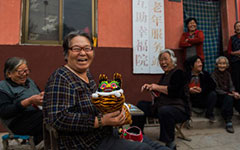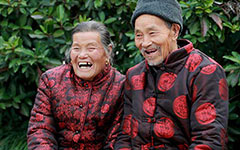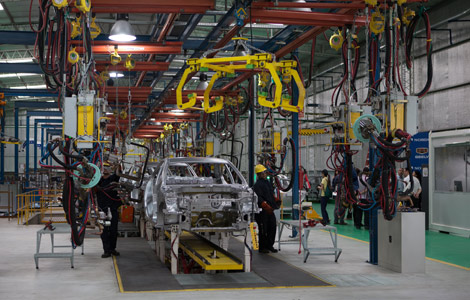Investors see green in a gray area of housing
Updated: 2014-05-27 07:12
By Hu Yuanyuan (China Daily)
|
|||||||||
Retirement community sector draws funds from developers, insurance firms
Chinese institutional investors and property developers are still pouring money into building senior living communities, despite the continuing cooling of the overall real estate sector.
Severall insurers' announced investment plans in building such communities have exceeded 200 billion yuan ($32 billion).
|
 |
|
 |
|
 |
Taikang Life Insurance Co Ltd, for example, plans to spend 100 billion yuan in the next five to eight years to build 15 to 20 elder-care communities across the country.
"We will complete our business arrangement in the Yangtze River Delta this year," Chen Dongsheng, chairman of Taikang Life, said in an earlier interview. The insurer plans to snap up land parcels in Nanjing, Suzhou, Hangzhou and Ningbo.
Meanwhile, property developers are also expanding into the sector. Zhongfang Resources Group, a Beijing-based developer, on Saturday announced its plan to build a healthcare and retirement community in Rushan, a coastal holiday resort in Shandong province.
Previously, about 30 large-scale developers, including Vanke and Poly, have announced similar plans.
The business opportunities offered by the country's rapidly aging population are a major attraction for investors and builders. According to the Ministry of Civil Affairs, China is home to 194 million people older than 60 years of age, and this group accounts for 14.3 percent of the population.
The figure is expected to exceed 300 million by 2025, with the aging population increasing by 10 million each year, the China National Working Commission on Aging said in a report.
"Aging industries will grow at 10 percent each year within a decade," said Nie Meisheng, former head of the China Real Estate Chamber of Commerce.
Industry statistics estimate that Chinese consumers' demand for elder care will exceed 17 trillion yuan by 2050, compared with 1 trillion yuan in 2010.
According to a Nielsen survey, when Chinese consumers think about life after retirement, their top priorities are staying physically and mentally fit, spending time with family and eating healthy. More than one-third of Chinese respondents said they plan to live at home with their spouses in old age, while living in a nursing home was the second most-preferred arrangement.
Fifteen percent plan to live at home with professional help, and 12 percent said they would like to live with their children.
For Ling Peixue, Shandong Commercial Group Co Ltd, it is understandable that private capital would want to take part in the elderly support system.
"The future of aging communities will be more promising than traditional real estate development," Ling said. But most industry analysts agreed that in China, commercial aging communities a lack a mature and sustainable business model.
Chen Guoqiang, head of the Real Estate Research Institute at Peking University, said most of the current retirement communities target high-end customers. With limited scale and an immature business model, it is hard to build in profitability, Chen said.

 'Face-Bikini' swimwear trend sweeps East China
'Face-Bikini' swimwear trend sweeps East China
 Iraqi pilgrims gather to honor Muslim saint
Iraqi pilgrims gather to honor Muslim saint
 Shanghai crowds flock to China, Russia battleships
Shanghai crowds flock to China, Russia battleships
 Documenting reaching fame the hard way
Documenting reaching fame the hard way
 US president pays surprise visit to Afghanistan
US president pays surprise visit to Afghanistan
 Forum discusses strategies to realize Africa's promise
Forum discusses strategies to realize Africa's promise
 South America is prime market for Chinese automakers
South America is prime market for Chinese automakers
 Brazil names winners for 'Bridge' finals
Brazil names winners for 'Bridge' finals
Most Viewed
Editor's Picks

|

|

|

|

|

|
Today's Top News
US urged to explain cyberspace spying
Yao Ming mulls Clippers bid
Beijing subways to get 4G coverage
Xinjiang's stability a top priority
More efforts against arms smuggling
Anti-terror campaign launched
China lifts shellfish ban
Children from China enroll in US summer academic camps
US Weekly

|

|






